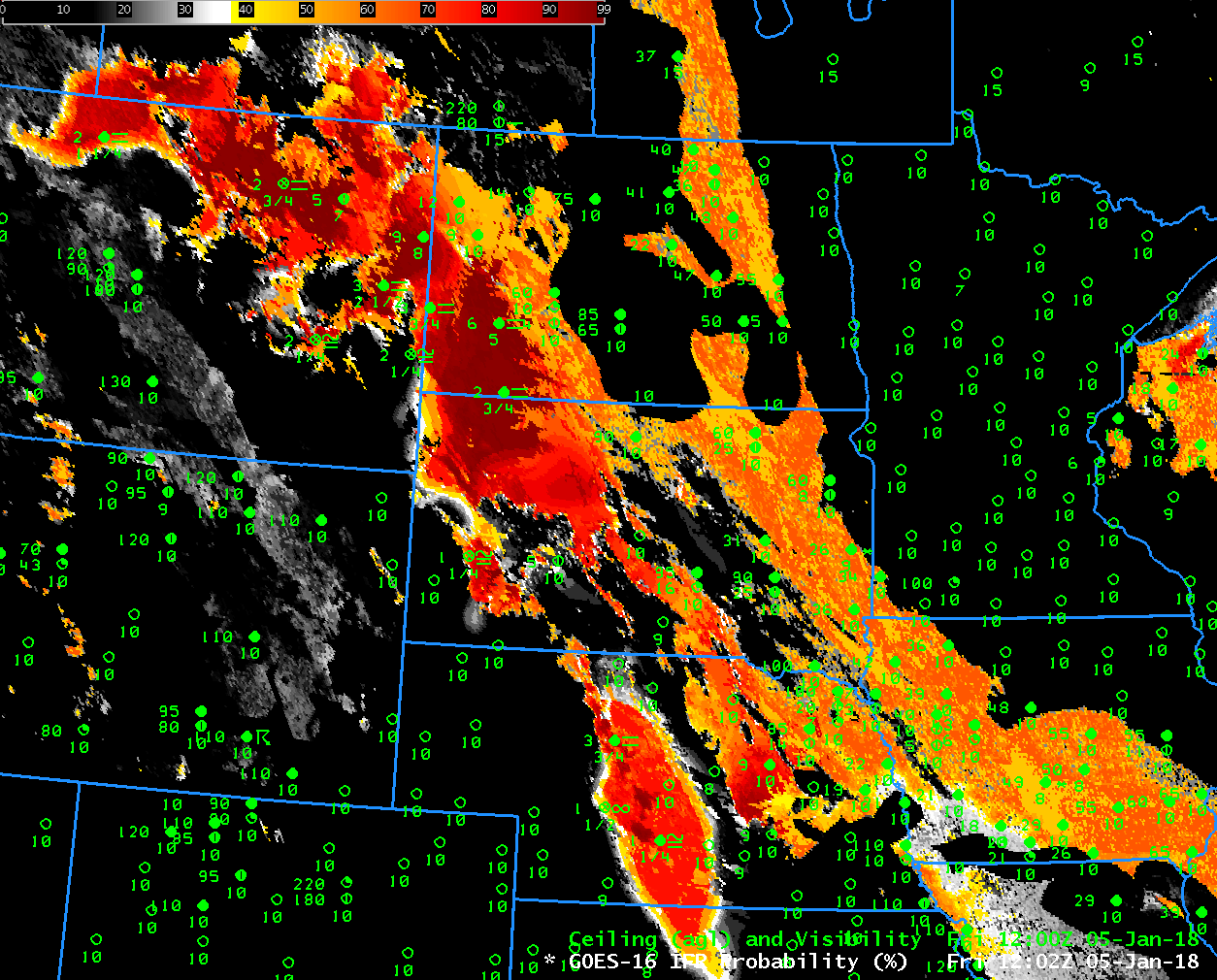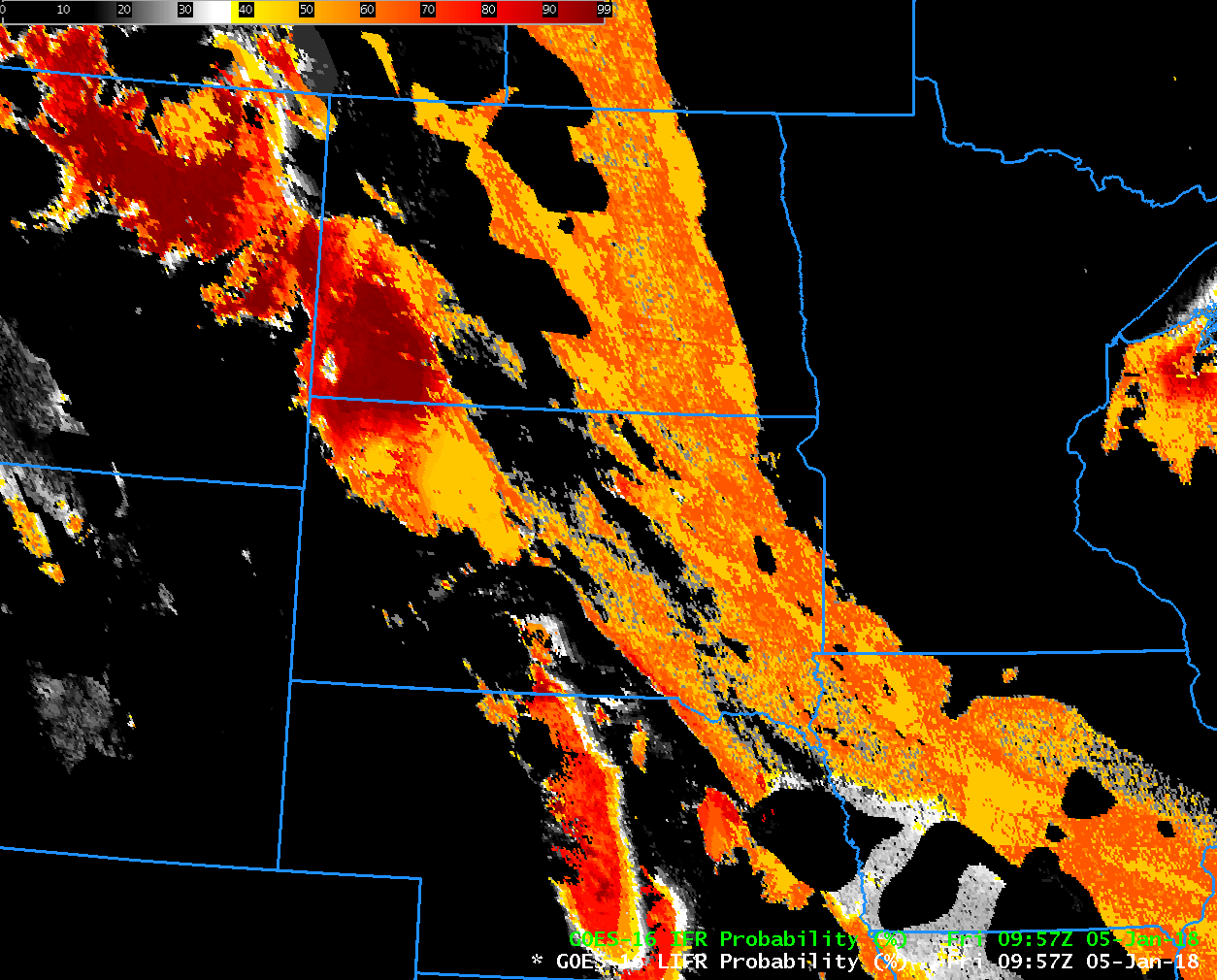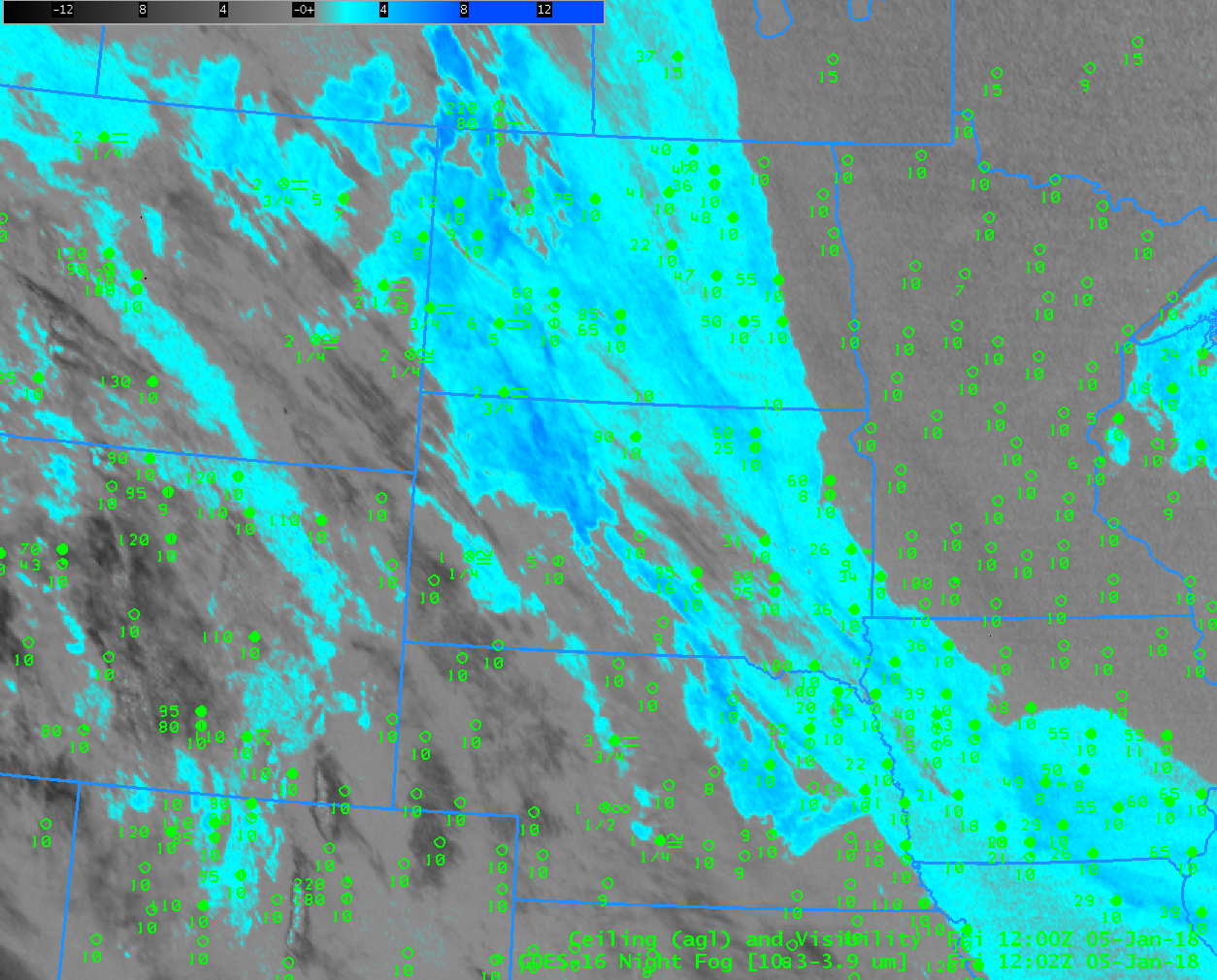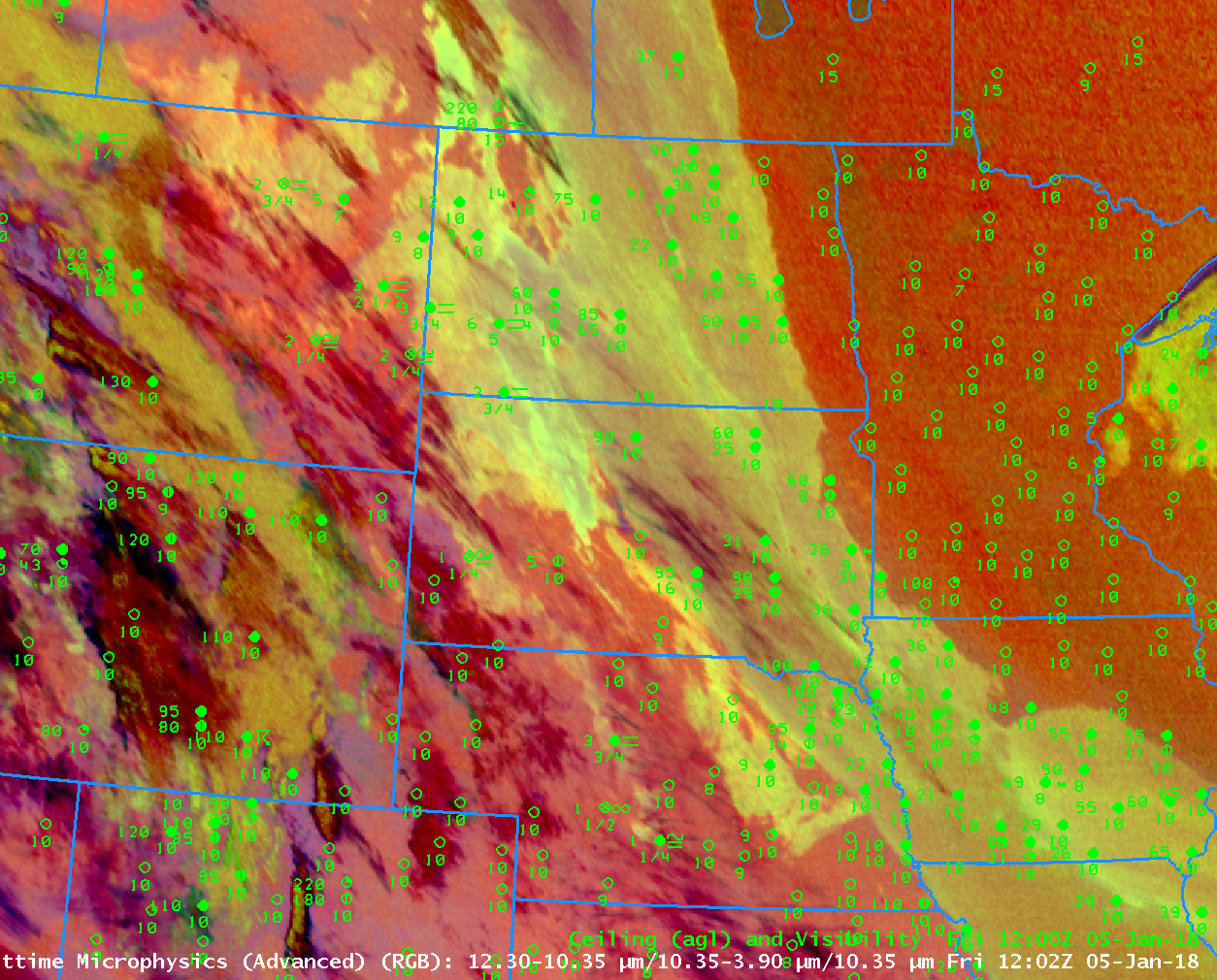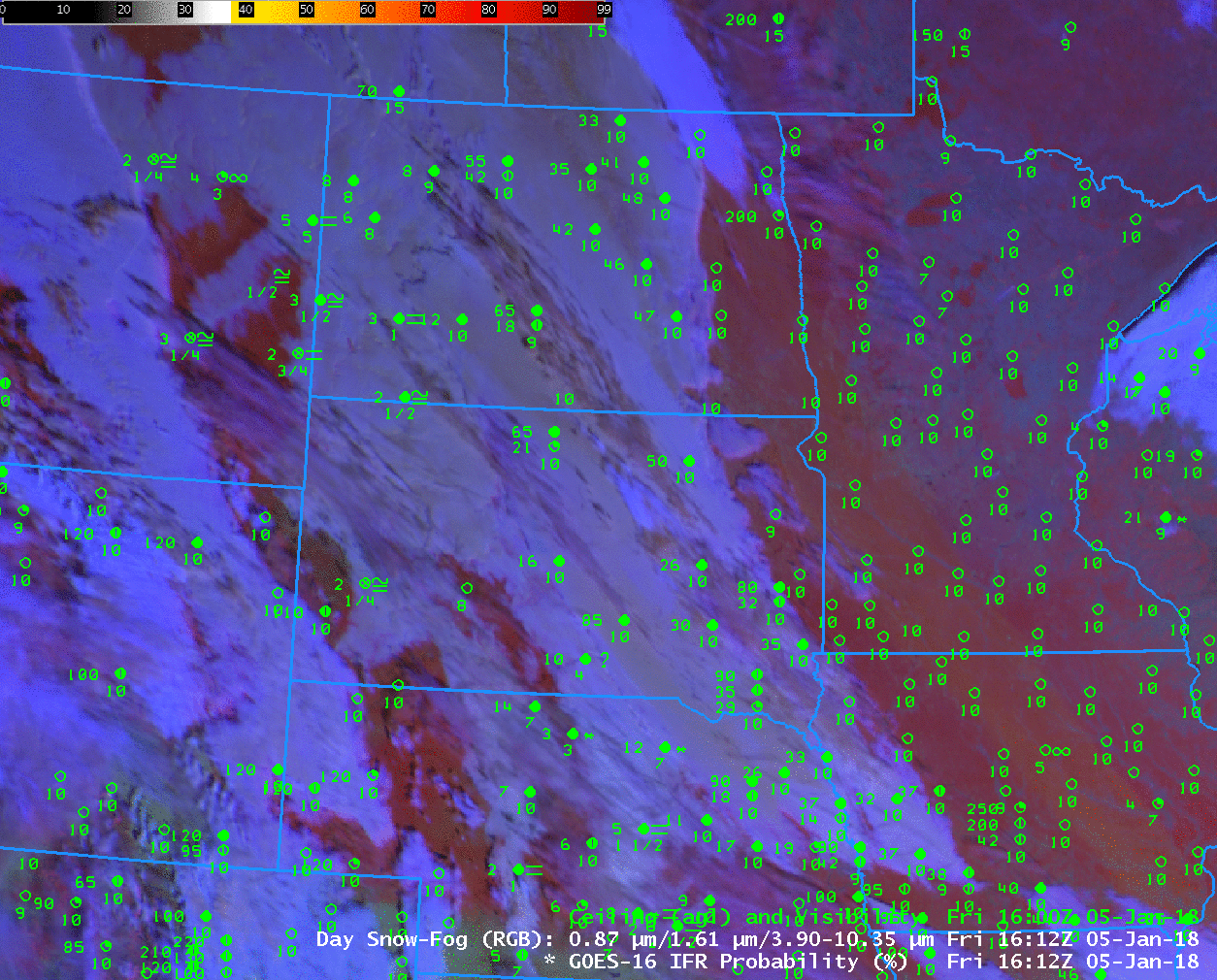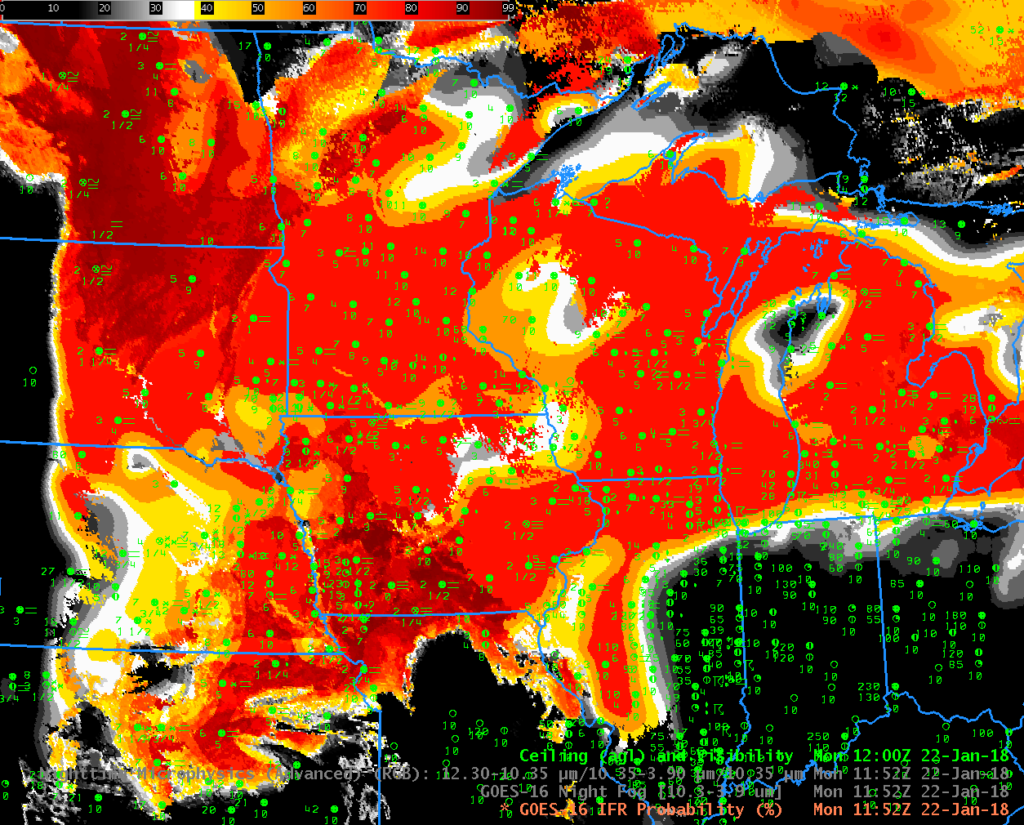
GOES-16 IFR Probabilities, 1152 UTC on 22 January 2018, along with 1200 UTC surface observations of ceilings and visibilities (Click to enlarge)
When skies are clear, and radiation fog forms, limiting visibilities, it’s straightforward to use satellite-only products to gauge where stratus and fog might exist. Extratropical storms generate multiple cloud layers, however; when warm sector air under multiple cloud layers overruns snow-covered or frozen ground, dense advection fog can develop, and that fog is difficult to discern from satellite because it is typically overlain by higher clouds.
GOES-R IFR Probabilities, above, (and Low IFR Probabilities here) show highest probabilities in general occur in the regions where IFR conditions were observed on 22 January. Over much of Wisconsin and Minnesota, the IFR Probability field is mostly uniform. Such a flat field is characteristic of a region where satellite data cannot be used to judge whether low stratus is present (because high clouds are also present). Rapid Refresh model information only is used to outline regions of low-level saturation. There is more variability to the IFR Probability field — that is, it is more pixelated — over southwest Iowa, for example, and over North Dakota. In these regions, low stratus clouds are being observed by satellite and both satellite and model data can be used to estimate regions of significantly reduced ceilings and visibilities.
Consider the Brightness Temperature Difference shown below. The 10.3 µm – 3.9 µm product is typically used to identify stratus and radiation fog, and it does detect those low clouds over North Dakota, and over Kansas, Missouri and southern Iowa, and over Ontario. However, the dense clouds associated with the storm over much of Minnesota and Wisconsin meant that this brightness temperature difference field, and also the NightTime Microphysics Red Green Blue Product (which is sometimes used to detect fog), could not ‘see’ the fog over the upper midwest.
Know the limitations, strengths and weaknesses of your products as you use them! On 22 January, High Clouds underscored limitations in the Brightness Temperature Difference product, and in the NightTime Microphysics product that relies on the Brightness Tempearature Difference product for fog detection. That limitation meant the product was not useful in identifying IFR conditions in parts of the Upper Midwest.


